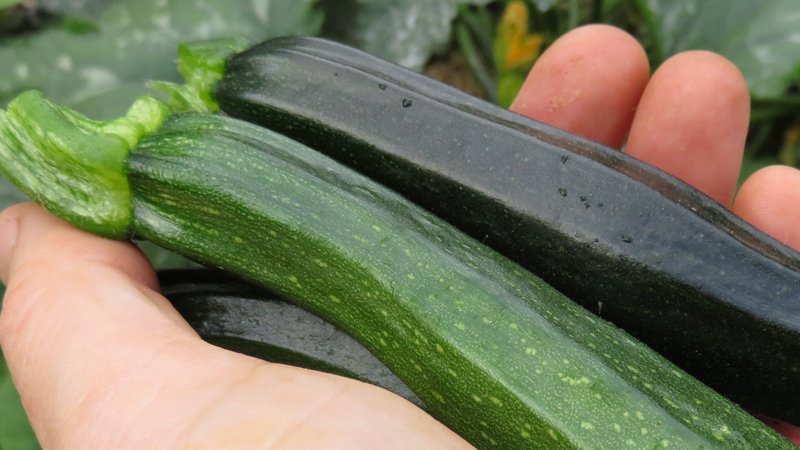Courgettes are a brilliant crop for the veg patch – they’re easy, hassle-free and you get loads to harvest from just one plant. If you’re growing them for the first time this year, here’s a little information to get you started.
What a courgette needs:
- Some space – most courgettes are sprawling plants that will easily reach 2-3m. However, our green courgette is a bush variety, so it is relatively compact (for a squash/courgette plant!) and can be planted 80cm-100cm apart. You could grow this variety in a large pot, 1 plant to a pot. For other varieties, plant them 1.5m apart in an area where you are happy for them to sprawl out.
- Plenty of sunlight – courgettes are a sun-loving plant, so be sure to choose a spot that gets plenty of sunlight throughout the day.
- Regular & consistent watering – fruiting vegetables always need plenty of water. Try to keep the soil consistently moist (but not waterlogged!) by watering regularly during dry spells so that the soil doesn’t dry out. Irregular watering can lead to blossom end rot and powdery mildew (see below)
- Pollination – courgette flowers are very popular with bees, and most people don’t have a problem with pollination. However, lots of pretty flowers dotted in and around your veg patch will help to attract more!
Flowering & cropping:
- Male flowers come in first – once the plant starts to flower, the male flowers come in first, for about 2-3 weeks sometimes. Their purpose is to attract bees and pollinators. Then the female flowers come in. You can recognise the difference because male flowers are just flowers on a stalk, whereas female flowers have a little bump at the end of the stalk before the flower which is the baby courgette.
- Pollination allows the fruit to grow – once pollinated, then the fruits begin to grow. If the weather is still a little cold, even with pollination the fruits may take a while to start growing, but be patient – as soon as the summer heat kicks in they’re off and before you know it you’ll have a glut on your hands!
- Pick regularly – they grow so quickly! Just keep picking them and use them any which way you can – grated into salads, courgette brownies, griddled on the BBQ, roasted, soups, courgette lemon drizzle cake…there are lots of ways to use them!
Problems:
- Blossom end rot – if you notice the ends of the courgette beginning to rot where the flowers were (the blossom end!), this is most likely to be Blossom End Rot. It is caused by a calcium deficiency that is nearly always due to a lack of water. If the roots can’t draw up enough water from the soil, then they can’t draw up enough calcium. If you experience this, be sure to water your plants more regularly and subsequent fruits should improve. In the meantime, cut off the affected part of the courgette and you can eat the rest!
- Powdery mildew – courgette leaves are prone to powdery mildew, a whitish coating that forms on the foliage. Towards the end of the season, when the leaves are more mature, this is very common and nothing to be alarmed by. Just let it run its course. However, if it is early in the season and your plants are young, it is likely that they are struggling to be the fit and healthy plants that they are due to inconsistent watering. Remove affected foliage and water more regularly and lovely green leaves should come through.
- No fruit – as mentioned above, this will be for 1 of 3 reasons: female flowers haven’t come through yet / poor pollination / weather not warm enough

